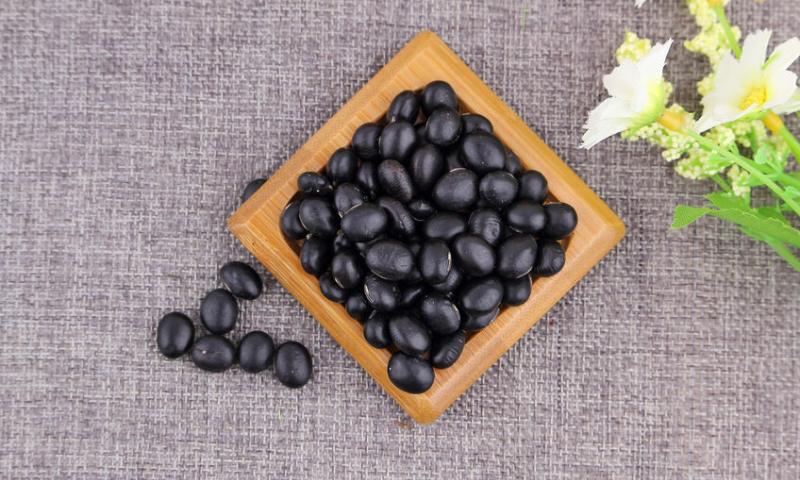 />
/>
COMMON NAME: Black Soybean
LATIN NAME: Glycine Max
ORIGIN: Asia
HABITAT: Black Soybean is widely cultivated in Asia, Southern Europe, North and South America, Central and South Africa, Australia, on the islands of the Pacific and Indian oceans at latitudes from the equator to 56-60 °.
BOTANICAL INFORMATION: Black Soybean (lat. Glycine Maxim) is an annual herbaceous plant, a species of the genus Glycine, the legume family, or Fabaceae.
Glycine Max is a grassy annual plant with a raw stem, relatively short main root and a large number of long lateral roots that reach 2 m in the soil. The stem and branches are straight or articulated, various in thickness. During the growing season, the various stems have a green or anthocyanin color. The stem is pubescent, from gray-white to yellow-brown in color. The leaves are alternate, pinnate, and mainly pubescent, with four to five leaves of various shapes: narrowly elongated, linear, oval and heart-shaped. The flowers are small, usually odorless, collected in a short, low-flowered or long, multi-flowered brush. The number of flowers in the brush varies from 2 to 20. The color of the corolla in most species is white or purple. The plant has ten stamens. Glycine Max is self-pollinating. Beans are straight, curved, sickle-shaped, flat or convex, pubescent, rarely bare, up to 5 cm long, light gray, brown, light brown and black in color. There are 10 to 400 beans on a plant. The number of seeds in a bean is from one to four. Soybean seeds can be black, brown, green and yellow, of various shades, as well as two-tone: brown, black or green with yellow, green with brown or black, brown with black pigment.
CHEMICAL CHARACTERISTICS:
The main biochemical component of soybean seeds is protein. According to various authors, an average of 38-42% of protein can accumulate in the seeds of this culture. In addition, Soy is rich in vitamins and minerals: dietary fiber, vitamin B1, vitamin B3, vitamin B6, vitamin B9, vitamin H, vitamin PP, choline, calcium, magnesium, potassium, phosphorus, sulfur, iron, zinc, copper, manganese, chromium, molybdenum, boron, silicon, cobalt.
The chemical composition of Soybean includes oil. It is found in seeds (from 16 to 27%). Soybean oil contains palmitic, stearic, linoleic and linolenic acids.
HISTORY:
One of the first references to soy products is the work of the Chinese emperor. The date of writing of this work is 2838 BC. Since then, people have been making oil, cheese, cottage cheese, sauce, milk, etc. from soy.
Soy came to Europe much later, according to some sources in the 16th century. It remained an exotic plant for a long time. However, in 1878 at an exhibition in Vienna, not only a couple of dozen soybean varieties were shown, but also a number of dishes from the plant were demonstrated.
*This article is for informational purposes only. We suggest consulting a physician before using these or any other herbal supplements.
